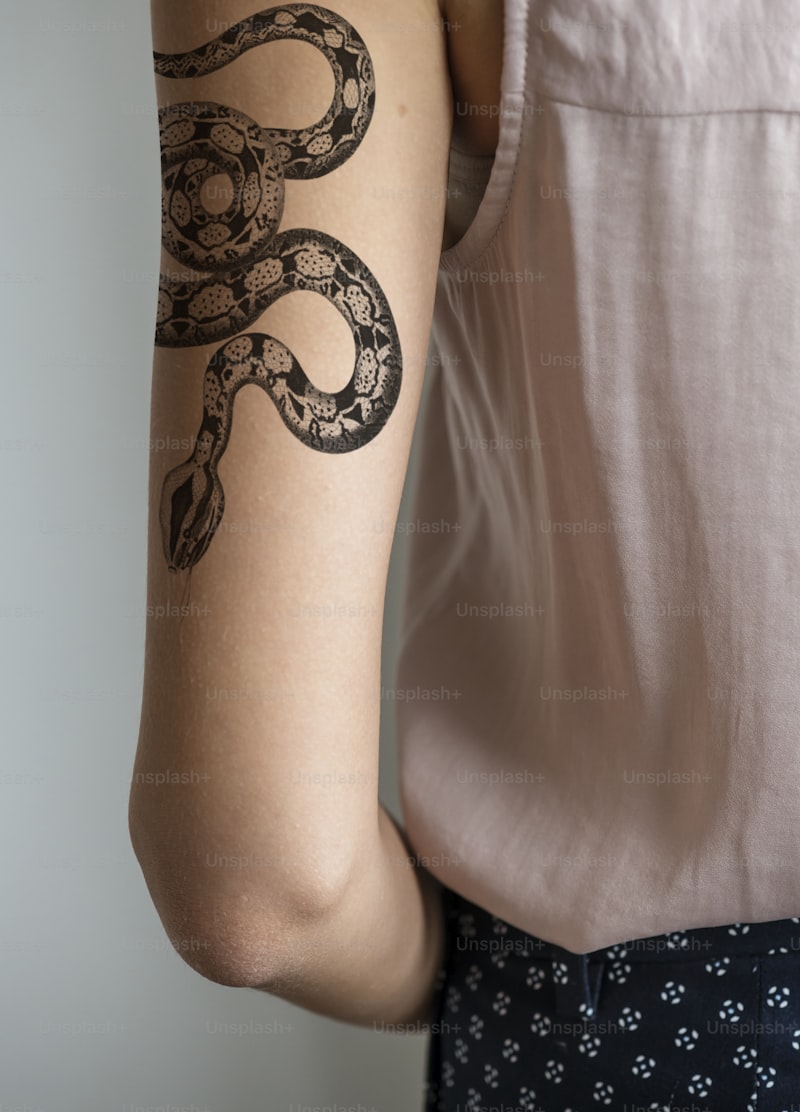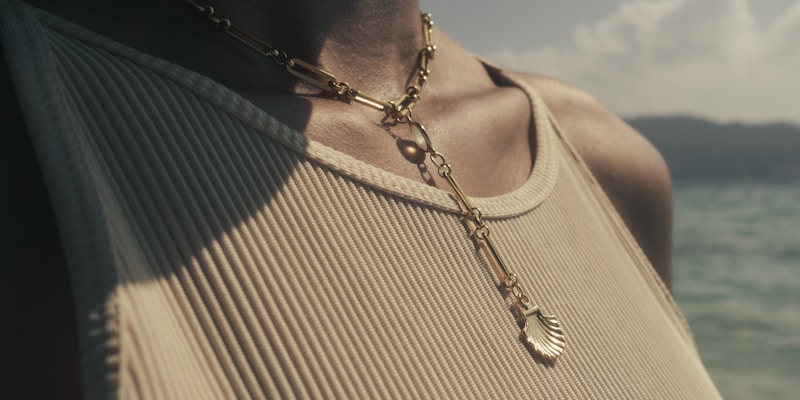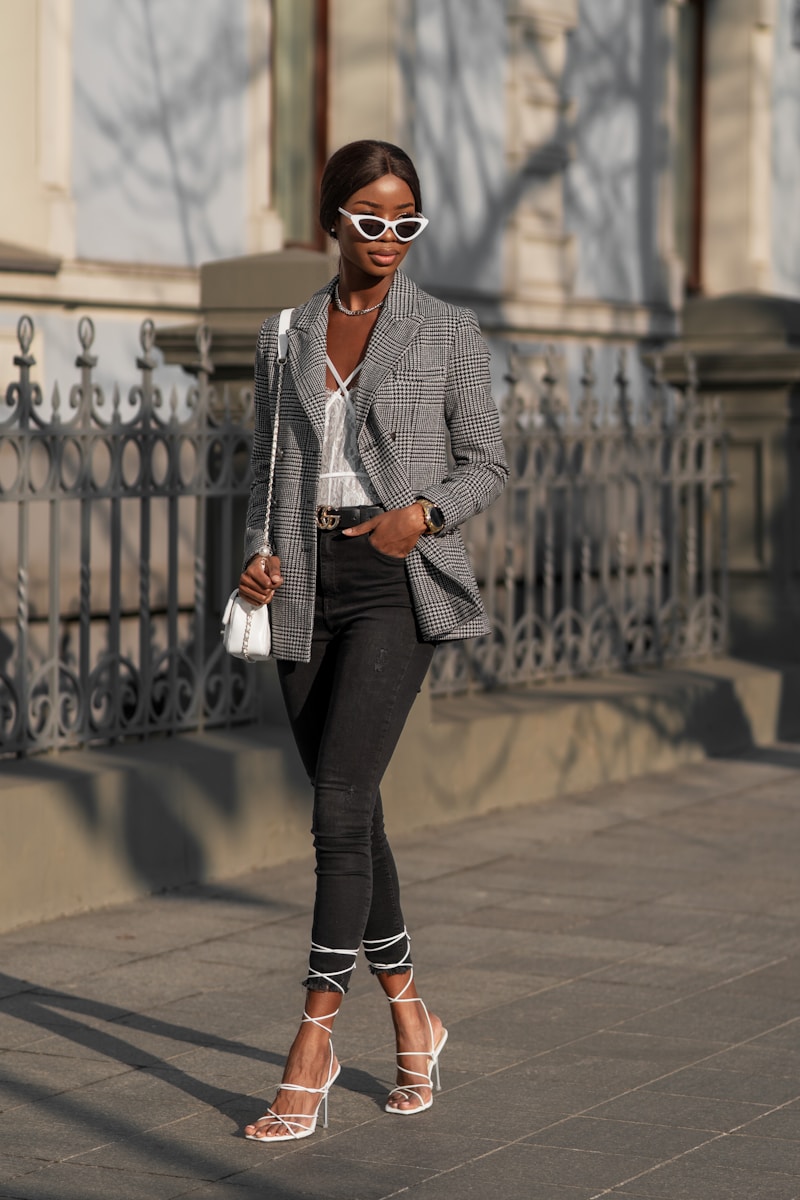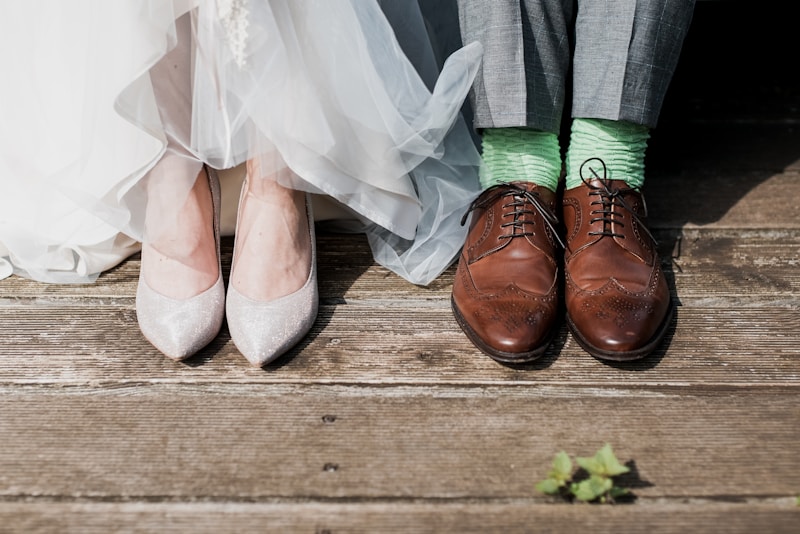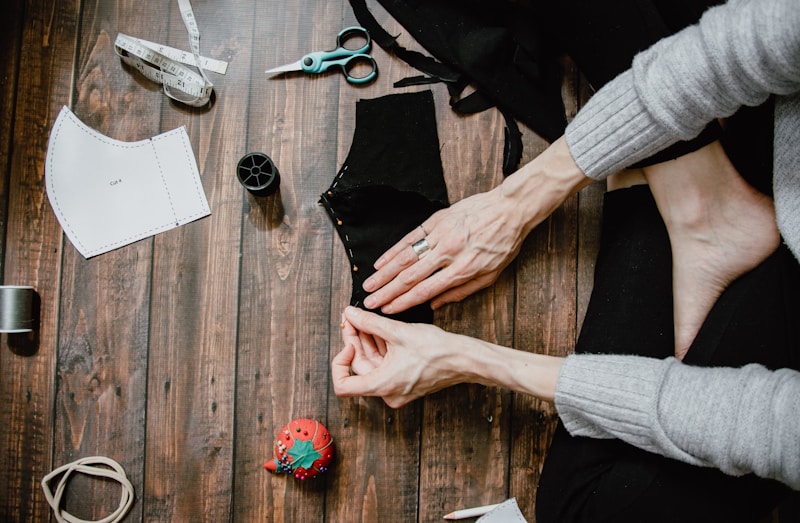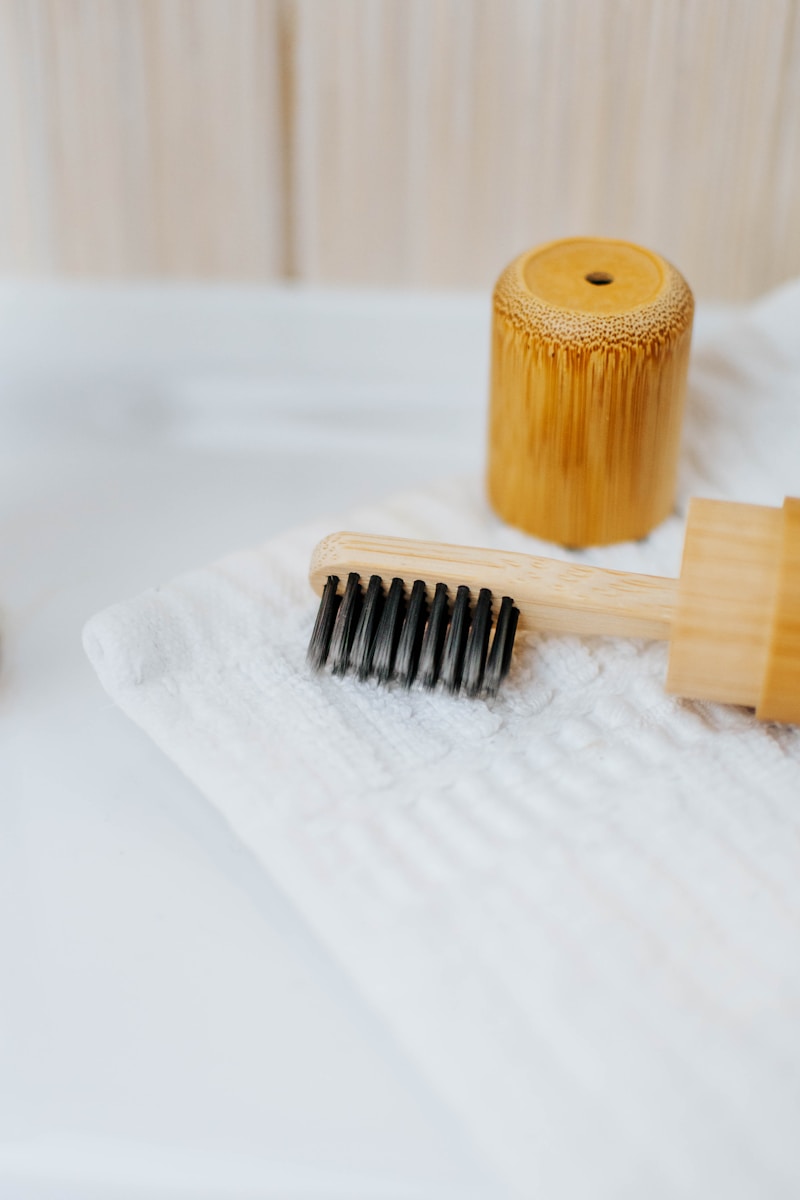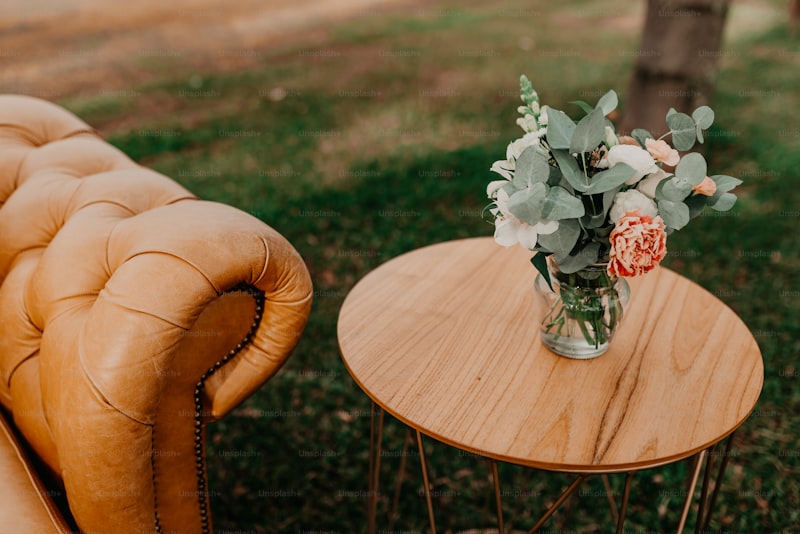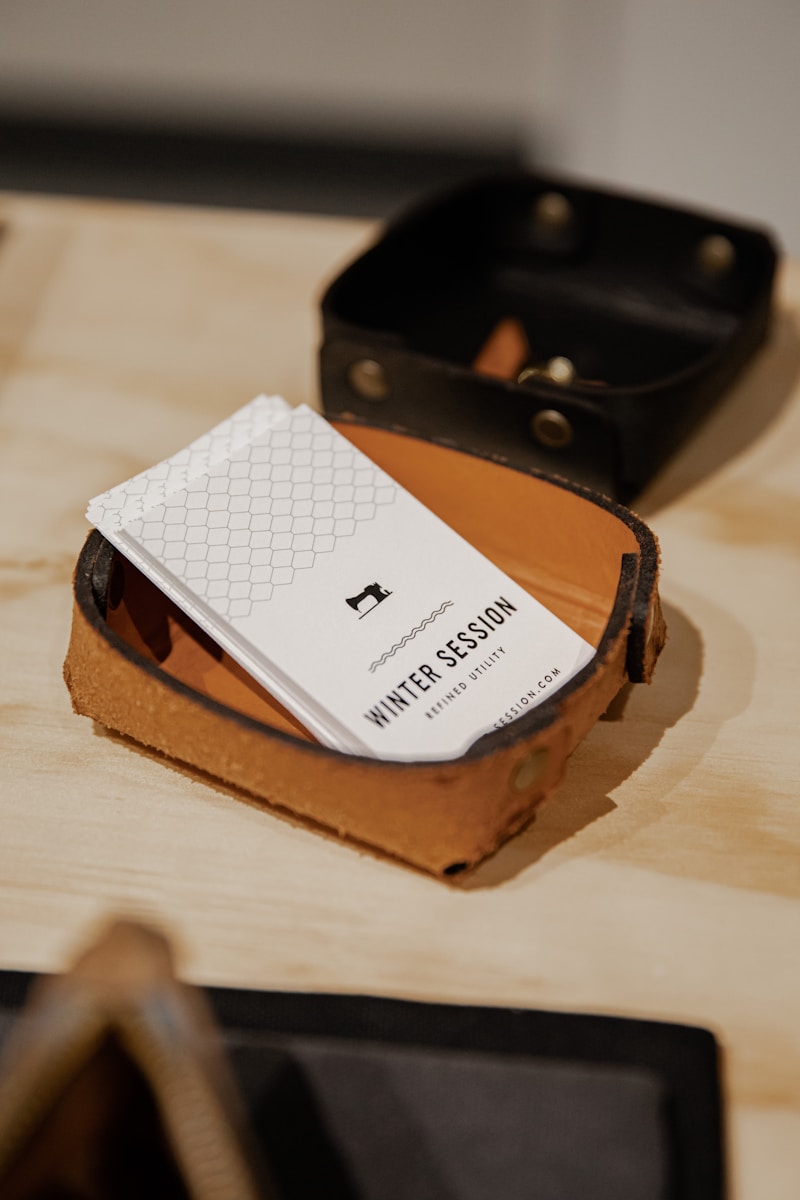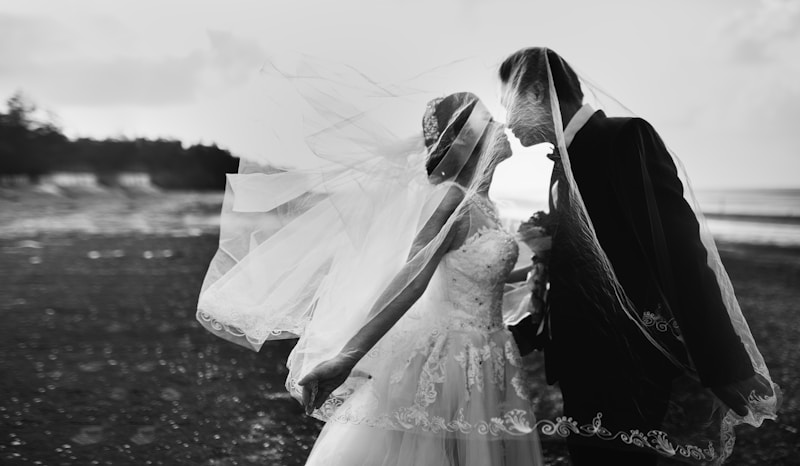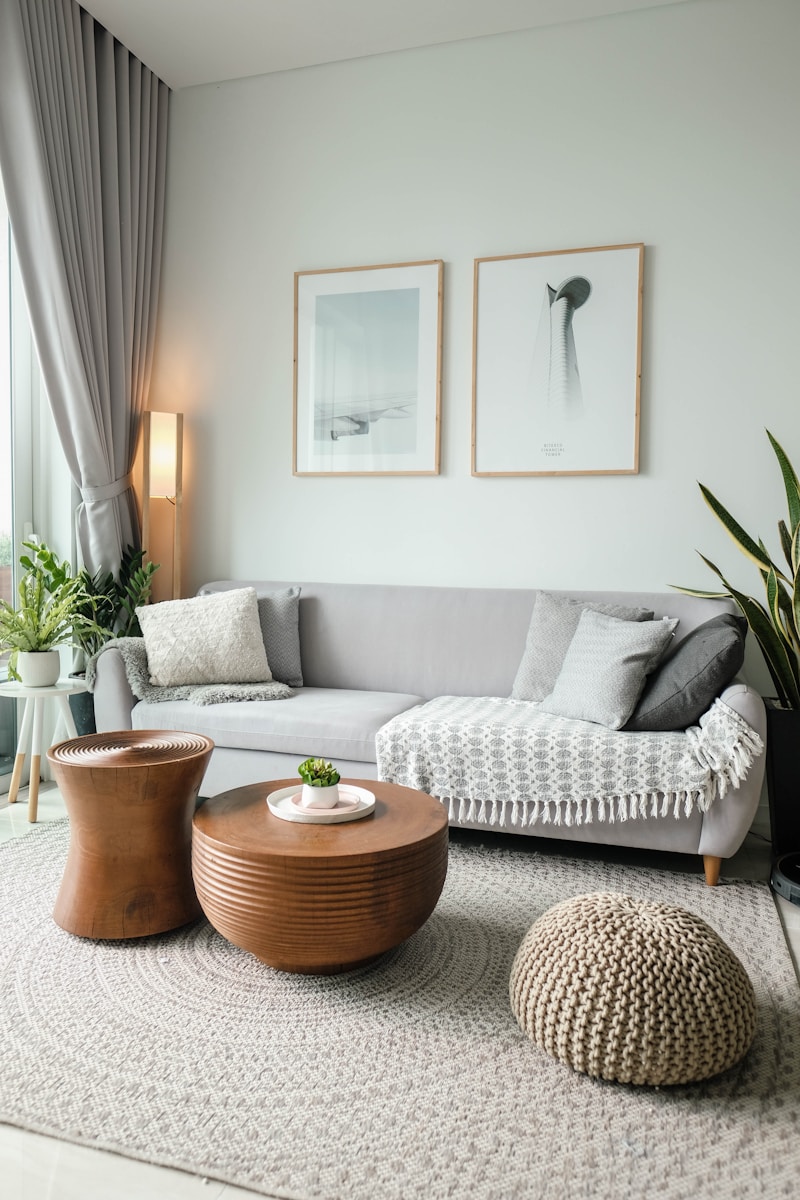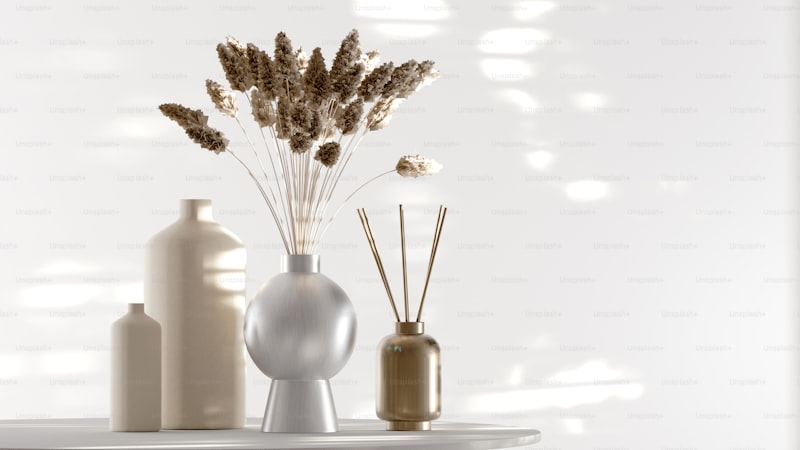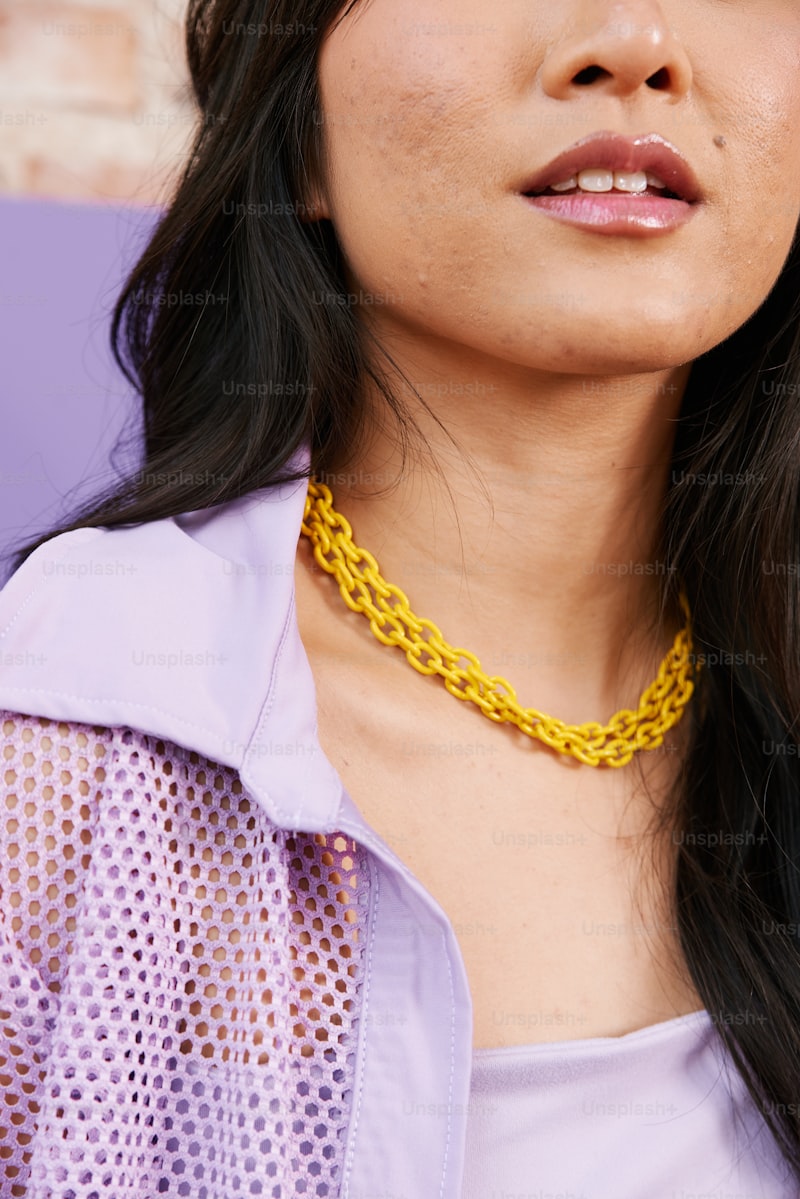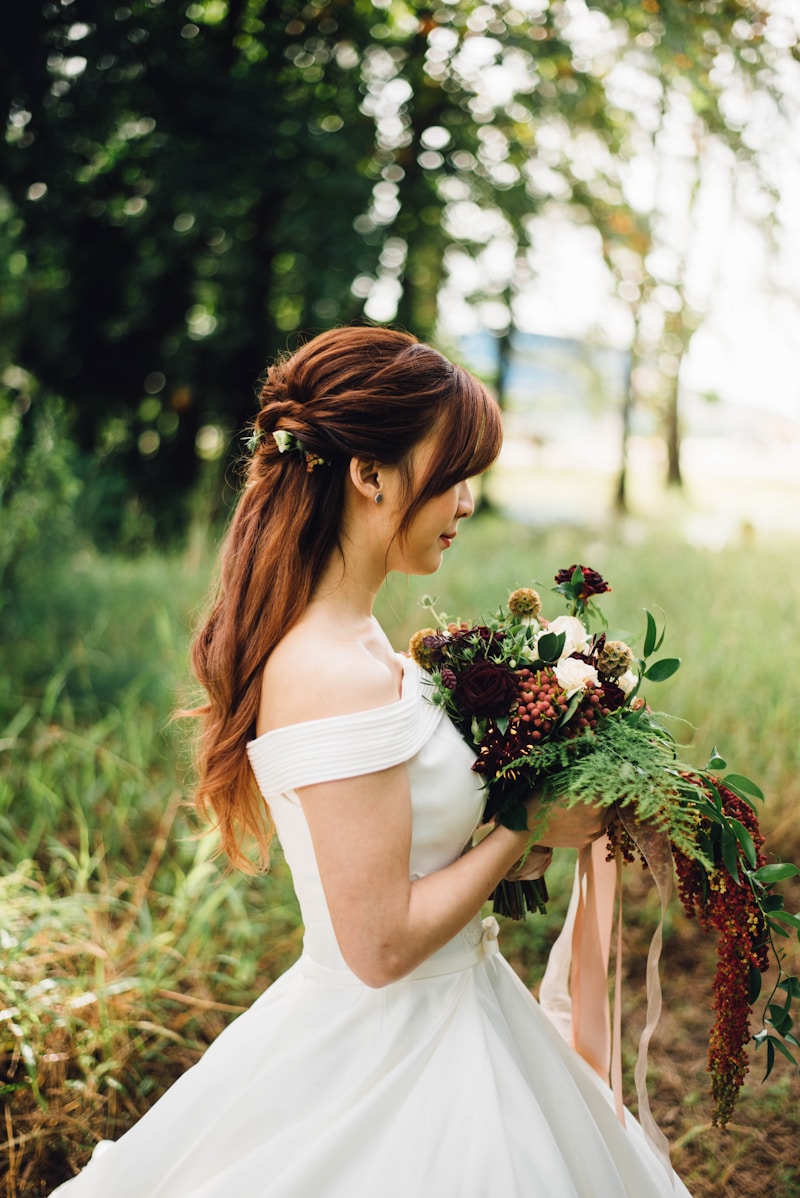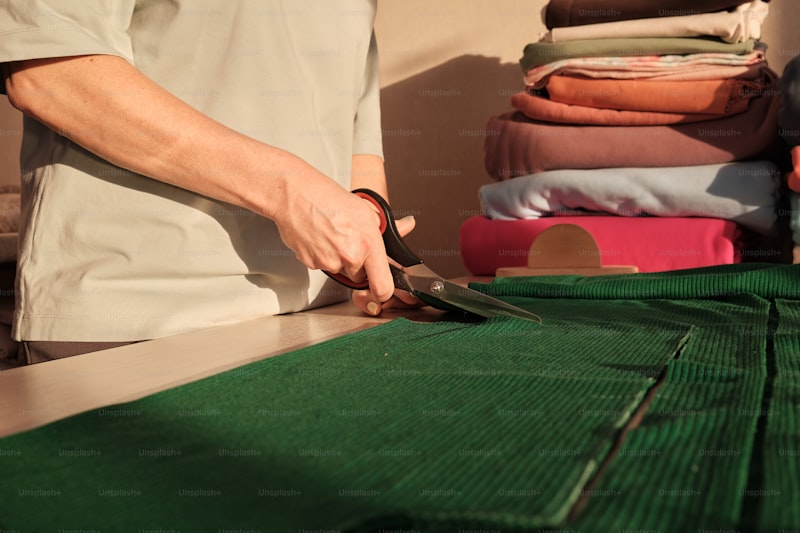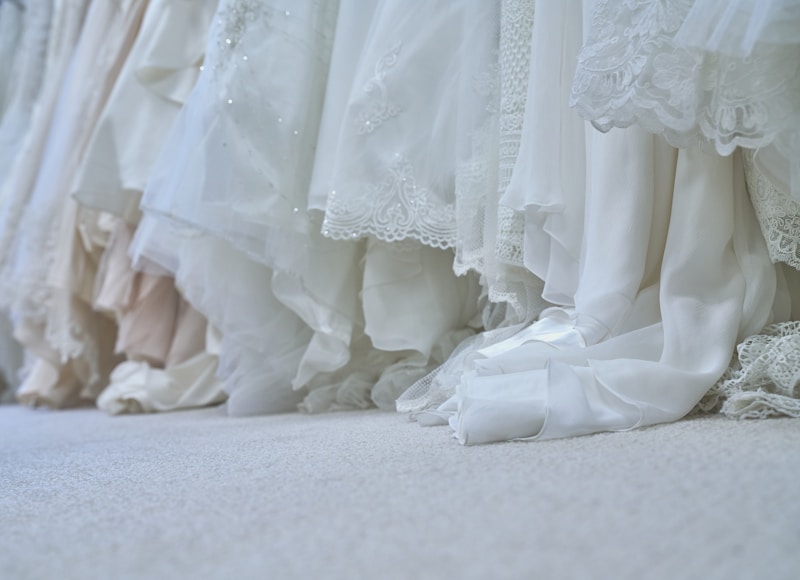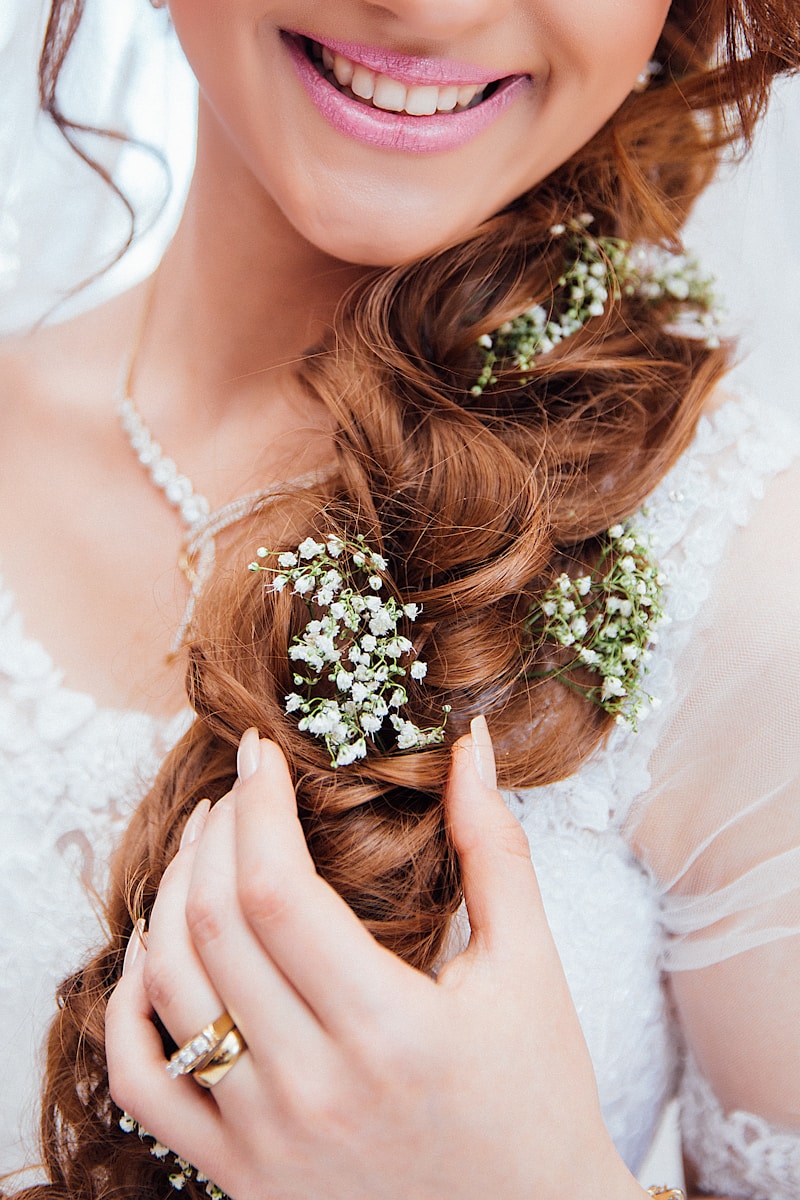Cultural Accessories in Weddings: A Comprehensive Guide
Understanding Cultural Accessories in WeddingsWeddings are a beautiful tapestry of love, commitment, and the blending of traditions. Among the myriad of elements that make a wedding memorable, cultural accessories play a significant role. These accessories not only add aesthetic value but also represent deep-rooted traditions, beliefs, and cultural heritage. This article delves into the fascinating world of cultural accessories in weddings, exploring their meanings, importance, and the diversity that they bring to wedding celebrations around the globe.The Significance of Cultural AccessoriesCultural accessories in weddings are more than mere decorative items; they embody the values, traditions, and stories passed down through generations. Each accessory has its own cultural significance, often tied to heritage, social status, spirituality, or good fortune. Incorporating these accessories into a wedding ceremony enriches the experience, creating a deeper connection to one's roots.Types of Cultural AccessoriesDifferent cultures around the world have unique accessories that hold special significance during wedding ceremonies. Here are some notable examples:CultureAccessoryMeaningIndianMaang TikkaA forehead ornament that signifies marital status.ChineseRed Wedding DressSymbolizes good luck and prosperity.MexicanLazoA symbolic tie representing union and fidelity.ScottishKiltRepresents tribal identity and heritage.AfricanBeaded NecklacesUsed to convey social status and community ti...
Temporary Tattoos for Brides: The Perfect Addition to Your Wedding Day
Weddings are a celebration of love, and every bride wants to look her best on this special day. While traditional elements like elaborate gowns and exquisite bridal jewelry take center stage, there's an emerging trend that has been captivating brides: temporary tattoos. These innovative body art designs not only offer a unique way to express individuality but also create stunning visuals that enhance your overall bridal look. In this article, we will explore the benefits, styles, and tips for using temporary tattoos for brides. Why Choose Temporary Tattoos for Your Wedding? Choosing temporary tattoos as part of your wedding day attire can be a game-changer for several reasons: Express Your Personality: Temporary tattoos let you showcase your personality, interests, and unique style. Customizable Designs: With countless options available, you can choose designs that resonate with your wedding theme or personal story. Less Commitment: Unlike permanent tattoos, temporary ones allow you to experiment without a lifetime commitment. Easy to Apply and Remove: Most temporary tattoos are easy to apply and can be removed quickly, making them perfect for a busy wedding day. Popular Designs for Bridal Temporary Tattoos When selecting a temporary tattoo, consider designs that complement your wedding dress and style. Here are some popular categories: Floral Designs Floral temporary tattoos are ideal for brides who want to add a touch of nature to their look. Delicate and colorful, these...
The Ultimate Guide to Colorful Accent Pieces: Transform Your Space
When it comes to home décor, color can make or break a space. One of the easiest ways to breathe new life into your room is through the use of colorful accent pieces. These vibrant additions not only highlight your personal style but also create a welcoming atmosphere. In this comprehensive guide, we will explore various types of accent pieces, their benefits, and tips on how to effectively incorporate them into your home. By the end, you'll be ready to elevate your space with the perfect pops of color!What Are Colorful Accent Pieces?Colorful accent pieces are decorative items that add a burst of color to your living space. They can range from small objects like cushions and vases to larger items such as furniture and artwork. The key to accent pieces is that they serve as focal points or supporting elements that complement existing decor while bringing a playful touch to your environment.Types of Colorful Accent PiecesThere are countless varieties of colorful accent pieces to choose from, and their application depends greatly on your style and the atmosphere you wish to create. Below is an overview of several types of colorful accent pieces.TypeDescriptionExamplesTextilesSoft furnishings that can easily change the feel of a room.Cushions, throws, curtainsArtworkVisual pieces that provide communication and stimulate emotional responses.Paintings, prints, sculpturesFurnitureStatement pieces that serve as both functional and decorative.Accent chairs, colorful tablesAccessoriesS...
Seasonal Accessory Suggestions: Elevate Your Style Year-Round
Introduction to Seasonal AccessoriesAs the seasons change, so too should your accessories. Whether you're preparing for spring blooms, summer sun, autumn leaves, or winter wonder, the right accessories can elevate your ensemble and reflect the unique beauty of each season. In this article, we will explore seasonal accessory suggestions that not only align with current trends but also highlight your personal style.Spring Accessories: Embrace FreshnessSpring is a time of renewal and vibrant colors. It's the perfect opportunity to refresh your wardrobe with light, playful accessories.1. Floral ScarvesFloral patterns are a staple of spring fashion. Lightweight scarves can add a splash of color to any outfit and are versatile enough to be worn in various ways. Consider a pastel floral scarf to enhance your spring looks.2. Statement SunglassesWith longer daylight hours, statement sunglasses become a must-have. Look for oversized frames or colorful lenses that catch the eye and protect you from UV rays.3. Earrings with Nature-Inspired DesignsSpring is all about embracing nature, and earrings inspired by flora and fauna can add a whimsical touch. Consider leaf-shaped hoops or flower studs to complement your spring outfits.Spring AccessoriesFloral ScarvesStatement SunglassesEarrings with Nature-Inspired DesignsSummer Accessories: Stay Cool and ComfyAs the temperature rises, summer accessories should prioritize comfort and a carefree vibe. Here are some essentials:1. Wide-Brimmed HatsP...
Mastering the Art of Mixing and Matching Accessory Styles
Introduction to Mixing and Matching Accessory StylesIn the world of fashion, accessories play a crucial role in defining one's personal style. Mixing and matching accessory styles can elevate an outfit from ordinary to extraordinary. This article explores the art of combining different accessories, providing insights, tips, and tricks to help you create stunning looks that reflect your unique personality.The Importance of Accessories in FashionAccessories are the finishing touches that can transform an entire outfit. From jewelry and hats to bags and scarves, the right accessories can highlight your style and even influence the way people perceive you. They also allow individuals to express their creativity and individuality in the way they dress. Understanding how to mix and match different styles can help you assemble an eye-catching ensemble.Fundamentals of Mixing and Matching AccessoriesWhen mixing and matching accessory styles, it’s essential to consider a few guiding principles:Balance: Aim for a balanced look by mixing bold and subtle accessories. If you have a statement necklace, consider pairing it with delicate earrings.Color Coordination: Pay attention to color palettes. Complementary colors can enhance the overall appearance, while clashing colors can disrupt harmony.Texture Variety: Mixing different textures can add depth to your outfit. Consider pairing leather with soft fabrics, or metal with natural materials.Proportions: Be mindful of the scale of your access...
Embrace Timeless Elegance with Vintage-Inspired Wedding Jewelry
Why Choose Vintage-Inspired Wedding Jewelry?In a world dominated by modern trends, vintage-inspired wedding jewelry offers a timeless elegance that many brides crave. As couples seek to infuse their nuptials with individuality and meaning, vintage pieces from the past resonate, embodying rich stories and intricate designs. Whether you’re an admirer of the roaring twenties or the classic elegance of the Victorian era, vintage-inspired wedding jewelry can make your special day even more memorable.The Charm of Vintage-Inspired Wedding JewelryVintage-inspired wedding jewelry captivates not only with its historical allure but also through its craftmanship. Here are some compelling reasons many brides are drawn to these pieces: Unique Designs: Unlike mass-produced modern jewelry, vintage-inspired pieces often feature intricate details that tell a story. Sentimental Value: Pieces inspired by history can symbolize love stories, making them more than just accessories. Environmentally Friendly: Opting for vintage or vintage-inspired jewelry can be a sustainable choice, minimizing your ecological footprint.Types of Vintage-Inspired Wedding JewelryWhen it comes to vintage-inspired wedding jewelry, the variety is vast. Here are some popular categories:StyleDescriptionEdwardianCharacterized by intricate lace-like designs, often featuring diamonds.Art DecoBold geometric shapes with colorful stones; perfect for a modern vintage look.VictorianRomantic and elaborate designs featuring ...
Discover the Allure of Unique Handmade Accessories: A Comprehensive Guide
Introduction to Unique Handmade AccessoriesIn a world where mass production dominates, unique handmade accessories stand out as one-of-a-kind treasures. These items not only reflect the creativity of individual artisans but also offer consumers a chance to express their personal style. This article dives deep into the enchanting realm of handmade accessories, exploring their origins, types, pricing, and the reasons why they are becoming increasingly popular among fashion enthusiasts.The Rise of Unique Handmade AccessoriesThe shift towards individuality in fashion has played a significant role in the rise of handmade accessories. With social media platforms showcasing unique creations, consumers are drawn to the authenticity that handmade items provide. Unlike mass-produced goods, which often lack character, handmade accessories carry stories and craftsmanship that resonate with shoppers.Why Choose Unique Handmade Accessories?Choosing unique handmade accessories not only supports artisans but also allows buyers to own something special. Here are some compelling reasons to consider when choosing these distinctive pieces:Support Small Businesses: When you buy handmade, you often support small businesses and independent artisans instead of large corporations.Customization: Many artisans offer customization options, allowing you to personalize your accessory to fit your style.Quality Craftsmanship: Handmade accessories often showcase superior craftsmanship compared to mass-produce...
Exploring Eco-friendly Accessory Choices: Elevate Your Style Sustainably
In today's world, where climate change and environmental sustainability are at the forefront of everyone's minds, making conscious choices in our daily lives has never been more essential. This applies not just to our food and energy consumption, but also to our fashion choices. When it comes to fashion, one area that often gets overlooked is accessories. In this article, we will delve into the world of eco-friendly accessory choices, exploring materials, brands, and tips for making sustainable decisions that not only elevate your style but also contribute positively to the environment.Understanding Eco-friendly AccessoriesEco-friendly accessories are products that are designed and manufactured with sustainability in mind. This means they are made from materials that are environmentally friendly, ethically sourced, and often designed to minimize waste. Common categories of accessories include jewelry, handbags, hats, belts, and sunglasses. By choosing eco-friendly options, consumers can reduce their carbon footprint while still looking fabulous.Materials: The Heart of Eco-friendly AccessoriesThe foundation of any eco-friendly accessory lies in the materials used to create it. Here are some popular sustainable materials often found in eco-friendly accessories:MaterialDescriptionCorkA renewable resource harvested from the bark of cork oak trees, cork is lightweight, durable, and biodegradable.BambooThis fast-growing plant is biodegradable and requires minimal water and no pesti...
Accessorizing for Outdoor Weddings: A Complete Guide to Style and Elegance
Outdoor weddings are a beautiful way to celebrate the union of two people in love, surrounded by nature and the elements. However, while the scenery can be stunning, choosing the right accessories is key to ensuring that both the bride and guests look their best. In this comprehensive guide, we will explore the essential aspects of accessorizing for outdoor weddings, including styles, trends, and tips tailored to this unique setting. Let's dive into the world of outdoor wedding accessories!Why Accessories Matter at Outdoor WeddingsAccessorizing can elevate an outfit, adding personality and flair. At outdoor weddings, the right accessories are crucial not only for aesthetic appeal but also for practicality. Here, we will address several key points regarding why these elements are important: Style Coordination: Accessories help enhance the overall theme and look of the wedding. Choose items that complement the natural surroundings. Comfort: Outdoor weddings can come with unpredictability, such as changing weather conditions, making comfort a priority. Functionality: Certain accessories can serve practical purposes, such as sunglasses for sunny days or shawls for cooler evenings.Common Accessories for Outdoor WeddingsWhen it comes to accessorizing for outdoor weddings, we should consider several types of items. Here are some must-have accessories for both brides and guests:Accessories for BridesAccessories for GuestsBouquetsClutch bagsHairpieces (e.g., floral crowns)Sun...
Statement Pieces for Contemporary Brides: Elevate Your Wedding Style
Weddings are evolving, and so are the choices brides make when it comes to their attire and accessories. Statement pieces have become a significant trend in the world of contemporary brides, allowing them to showcase their unique personalities and styles on their special day. In this article, we will explore various statement pieces that modern brides are adorning, why they are essential, and how you can choose the right ones for your wedding. Let’s delve into the world of bold bridal fashion! Understanding Statement Pieces Statement pieces are standout items that draw attention and serve as the focal point of an outfit. For contemporary brides, these can range from distinctive jewelry to unconventional gowns and striking accessories. The primary goal is to enhance the bridal look while conveying individuality and modernity. Why Choose Statement Pieces? Brides today are more inclined to embrace their personal styles rather than conforming to traditional norms. Here are some reasons why statement pieces are a great choice: Self-Expression: Statement pieces allow brides to express their unique styles and personalities. Creating a Unique Look: With statement items, even a simple gown can celebrate individuality, setting the bride apart from the crowd. Memorable Photographs: Making bold choices can result in breathtaking photographs that tell a story of the bride's character. Types of Statement Pieces for Modern Brides There are numerous statement pieces cont...
Caring for Wedding Accessories: A Comprehensive Guide
Planning a wedding involves numerous details, and one of the most critical aspects is ensuring that your wedding accessories are well taken care of. Whether it’s your wedding ring, jewelry, bridal veil, or even decorative pieces, knowing how to care for them can help maintain their beauty and integrity for years to come. In this article, we will explore various types of wedding accessories, the best methods for caring for them, and some tips to keep them in pristine condition.Understanding Wedding AccessoriesWedding accessories can encompass a wide array of items, each requiring specific care. Here are some common types of wedding accessories:Accessory TypeExamplesCare InstructionsJewelryRings, bracelets, necklacesClean with a soft cloth, store separatelyVeils and HeadpiecesVeils, tiaras, hairpinsStore flat, avoid contact with makeupFootwearBridal shoes, flip-flopsKeep dry, clean stains immediatelyDecorative ItemsCake toppers, centerpiecesDust regularly, store in protective boxesCaring for JewelryJewelry is often the centerpiece of any bridal ensemble. Each piece can hold sentimental value and must be maintained accordingly. To care for your jewelry:Cleaning: Use a soft, lint-free cloth to clean your jewelry after wearing it. This helps to remove oils and dirt from your skin that can dull the shine.Storage: Store your jewelry in a padded container or a soft fabric pouch. Avoid storing different pieces together to prevent scratching.Professional Cleaning: Schedule periodic cle...
Discover Affordable but Stylish Options for Every Occasion
In today's fast-paced world, finding affordable but stylish options can feel like a daunting task. Whether you're looking to revamp your wardrobe, furnish your home, or even spruce up your events, having access to options that combine both style and affordability is essential. This article explores various aspects of stylish yet budget-friendly alternatives, guiding you through fashion, home decor, and special occasions.Fashion: Dressing Stylishly on a BudgetWhen it comes to fashion, many assume that looking good requires spending a fortune. However, there are myriad affordable but stylish options available for everyone. From thrift stores to online retailers, discovering fashionable attire that doesn’t break the bank has never been easier. Here are some tips to achieve that perfect balance between affordability and style:1. Thrift Stores and Vintage ShopsVisiting thrift stores and vintage shops can yield treasure troves of fashionable finds. Often, you can score unique pieces that add character to your wardrobe. Look for:ItemStyle TipVintage DressesPair with modern accessories to update the look.High-quality KnitwearLayer them with stylish scarves for a fashionable appearance.Classic JeansChoose a slim fit and pair with trendy shoes for casual outings.2. Online RetailersMany online retailers specialize in affordable but stylish options. They often have sales and discounts that you can take advantage of. Websites like ASOS, H&M, and Uniqlo provide endless possibilities. Keep ...
Embracing Understated Elegance with Simple Pieces: A Guide to Minimalism in Fashion
In an era where fashion is often synonymous with extravagance and complexity, the concept of understated elegance has taken center stage. While some may associate glamour with bold colors and elaborate designs, many have discovered the beauty and sophistication that lies in simple pieces. This article delves into the essence of embracing understated elegance in fashion, offering practical tips, showcasing examples, and addressing related questions to inspire your minimalist wardrobe.Understanding Understated EleganceUnderstated elegance is the art of making a statement with simplicity. It emphasizes quality over quantity, focusing on classic styles that transcend trends. Minimalism in fashion promotes the idea that less is more, allowing individuals to express themselves without overwhelming their appearance with excessive embellishments. This elegant style is characterized by clean lines, neutral colors, and timeless silhouettes.The Philosophy Behind MinimalismThe minimalist movement has extended beyond design aesthetics; it encapsulates a lifestyle choice that prioritizes mindfulness and purpose. By opting for simple pieces, individuals can cultivate a wardrobe filled with versatile items, fostering creativity and versatility in their daily outfits.Minimalist Philosophy FeaturesDescriptionQuality Over QuantityInvesting in well-made, durable clothing that lasts for years.VersatilityChoosing pieces that can be styled in various ways for different occasions.TimelessnessOpting ...
Layering Accessories for a Modern Look: Elevate Your Style
Unlocking the Secret to Stylish Layering AccessoriesIn today's fast-paced fashion world, staying trendy while expressing personal style can be a challenge. Layering accessories are a fantastic way to enhance your wardrobe and create a modern look that stands out. Whether you are dressing up for a night out or adding flair to your everyday outfit, the right accessories can make all the difference. This article delves deep into the art of layering accessories, exploring tips, tricks, and ideas to help you achieve that coveted modern aesthetic.Understanding Layering: The BasicsLayering isn’t just about throwing on multiple pieces; it’s about balancing proportions, textures, and colors. To master the art of layering accessories, consider the following foundational elements: proportion, texture, color, and style. Understanding these concepts will significantly enhance your ability to create stunning ensembles.1. Proportions MatterWhen layering accessories, balance is crucial. Aim to combine pieces of different lengths and sizes. For example, layer a long pendant necklace with shorter chokers for a chic look. Here’s a quick breakdown:Accessory TypeBest PairingChokerMedium-length necklaceLong pendantShort collar necklaceBraceletsWatch or cuffEarringsHoops with studs2. Mixing TexturesCombining different textures adds depth to your outfit. For instance, mixing metals with wood, leather, or fabric can elevate your style. Consider pairing a silver bracelet with a leather strap or gold e...
Ultimate Guide to Wedding Gown Storage Techniques: Keep Your Dress Flawless for Years
Understanding the Importance of Proper Wedding Gown StorageYour wedding gown is not just a piece of clothing; it is a cherished memento of one of the most significant days of your life. Proper storage of your wedding gown ensures that it remains in pristine condition for years to come. Many brides may wonder about the best methods for preserving their gowns, especially after the excitement of the wedding day is over. In this article, we will cover essential wedding gown storage techniques, tips on how to handle different fabrics, and common questions brides ask regarding storage.Factors to Consider Before Storing Your Wedding GownBefore diving into specific storage techniques, there are several factors you should consider to ensure your wedding gown is preserved effectively: Fabric Type: Different fabrics respond differently to storage conditions. For instance, silk is delicate and can be easily damaged if not stored properly. Environmental Conditions: Humidity, temperature, and light exposure can all affect your gown's condition. Ideal storage conditions are cool, dry, and dark. Cleaning: Ensure the gown is cleaned before storage to prevent stains from developing over time.Wedding Gown Storage TechniquesHere are some effective storage techniques to keep your wedding gown looking its best:1. Clean Your Gown ProfessionallyBefore you even think about storing your gown, it is crucial to have it cleaned by a professional. Wedding gown-specific dry cleaners will know how ...
Mastering Long-Term Dress Care Practices for Timeless Elegance
Introduction to Long-Term Dress Care PracticesWhen it comes to maintaining the beauty and longevity of your favorite dresses, understanding long-term dress care practices is essential. Whether it's a cherished vintage piece or a modern masterpiece, proper care ensures your garments remain in pristine condition for years to come. In this article, we explore various strategies to effectively care for your dresses, including cleaning, storing, and routine maintenance. Our goal is to provide you with comprehensive guidelines that not only preserve your attire but also enhance its aesthetic appeal over time.Understanding Dress Fabrics and Their Care RequirementsDifferent dress fabrics require distinct care practices. Knowing your material is the first step in effective long-term dress care. Here’s a summary of common fabrics and their care:Fabric TypeCare InstructionsCottonMachine washable in cold water, tumble dry low. Iron on medium heat.SilkHand wash or dry clean. Avoid direct sunlight. Iron on low heat with a cloth.WoolDry clean recommended. Store in a breathable bag to prevent moths.LinenMachine washable. Iron while damp for best results.PolyesterMachine washable, tumble dry low or air dry. Iron on synthetic setting.Cleaning Your Dresses: Best PracticesRegular cleaning helps avoid the accumulation of dirt and stains, which can be damaging over time. Here are some best practices for cleaning:Hand Washing vs. Machine WashingFor delicate fabrics such as silk or lace, consider ha...
Preserving Sentimental Garments: A Comprehensive Guide
Understanding the Importance of Preserving Sentimental Garments Sentimental garments carry memories and stories, serving as tangible links to our past. Whether it's a wedding dress, a childhood outfit, or a family heirloom, preserving these garments is essential for maintaining their significance. In this article, we will explore the best practices for preserving sentimental garments, the common challenges faced, and tips for ensuring they last for generations to come. Why Preserve Sentimental Garments? Sentimental clothing is often irreplaceable, holding special value in our hearts. However, time, wear and tear, and environmental factors can jeopardize their condition. Here are some compelling reasons to prioritize preservation: Emotional Value: These garments remind us of significant life events and loved ones. Historical Significance: They can represent cultural heritage and family history. Investment Protection: Some garments can appreciate in value over time, especially designer pieces.Common Challenges in Preserving Garments While preserving sentimental garments is critical, it can also be challenging. Here are some common issues faced: Fabric Degradation: Exposure to light and air can cause fading and weakening fibers. Stains: Accidental spills or contact with oils can create permanent marks if not addressed quickly. Pests: Moths and other insects can damage fabric if garments are not stored properly. Best Practices for PreservationTo help you prote...
Maintaining Your Wedding Dress for Years: A Comprehensive Guide
Your wedding dress is not just a piece of clothing; it represents one of the most significant days of your life. Many brides dream of passing down their wedding dress to future generations or using it in creative ways long after the big day. However, maintaining your wedding dress for years requires proper care and attention. In this guide, we will explore effective strategies, tips, and methods to keep your wedding gown in pristine condition, allowing you to cherish these memories forever.Understanding the Importance of Wedding Dress PreservationEvery wedding dress is unique and often made from delicate fabrics. Without proper care, even the most beautiful gown can deteriorate over time. Here are some vital reasons to preserve your wedding dress: Sentimental Value: Your wedding dress holds emotional significance; preserving it allows you to relive those beautiful memories. Generational Legacy: Many brides dream of passing their gown to their daughters or daughters-in-law for their big day. Future Wear: Some brides may want to wear their dress again for special occasions or styled photoshoots.Steps to Maintain Your Wedding Dress1. Immediate Cleaning After the WeddingAfter your wedding day, it’s crucial to deal with any stains as soon as possible. Consider the following steps: Identify Stains: Check for any visible stains from food, dirt, or perspiration. Mark them with a gentle, non-permanent marker. Spot Clean: Use cold water to spot clean the areas. Avoid usi...
Effective Cleaning Methods for Bridal Wear: Keeping Your Wedding Dress Sparkling Clean
Understanding the Importance of Cleaning Bridal WearYour wedding day is one of the most significant events in your life, and your bridal wear is at the heart of it. Whether you’ve chosen a classic gown or a modern ensemble, ensuring that your bridal wear stays in pristine condition is essential. Effective cleaning methods for bridal wear not only help maintain the dress’s beauty but also help preserve memories associated with one of the happiest days of your life.Why is Proper Cleaning Important?Bridal wear often incorporates delicate fabrics, intricate designs, and valuable embellishments. Proper cleaning prevents issues such as:Stains: Food, makeup, or dirt can leave lasting marks if not treated promptly.Fabric Damage: Certain fabrics can be sensitive and may require special cleaning methods to avoid damage.Color Fading: Improper cleaning can lead to color fading, which can alter the appearance of your dress.Effective Cleaning Methods for Bridal WearWhen it comes to cleaning your bridal wear, understanding the best methods will help you retain its beauty and elegance. Here are some effective cleaning methods:1. Dry CleaningDry cleaning is often recommended for intricate bridal gowns, especially those made from silk, satin, or tulle. The process uses solvents instead of water, reducing the risk of damaging delicate fabrics.2. Spot CleaningFor small stains, spot cleaning is a practical approach. Use a clean cloth or sponge along with mild soap or a specific stain remover. Alw...
Ultimate Guide to Emergency Stain Removal for Bridal Gowns: Save the Day on Your Special Occasion!
Your wedding day is one of the most significant events in your life, and every detail—from the venue to your bridal gown—needs to be perfect. However, accidents happen, and stains can emerge out of nowhere. That's why understanding emergency stain removal for bridal gowns is crucial for every bride. In this guide, we will cover effective techniques, preventive measures, and expert tips to help you deal with stains so you can focus on enjoying your big day.The Importance of Quick Stain RemovalBrides often invest a lot of money into their wedding gowns, and a single stain can ruin the overall beauty of the outfit. Quick stain removal not only helps preserve the gown's aesthetic appeal but also reduces the chances of permanent damage. Here's why timely action is critical: Stains can set quickly, especially if they are caused by food, beverages, or makeup. Many stains, like red wine or ink, can cause irreversible damage if not treated immediately. A clean gown ensures you feel confident and beautiful as you walk down the aisle.Common Stains and Effective Removal TechniquesTo effectively respond to an emergency, you must know the potential culprits that could stain your bridal gown. Here are some common stains and their corresponding treatment methods:Stain TypeEmergency Removal MethodRed WineImmediately blot with a clean white cloth, sprinkle salt to absorb, and rinse with cold water.MakeupGently blot with a makeup remover wipe or a damp cloth, then rinse with cold water...
